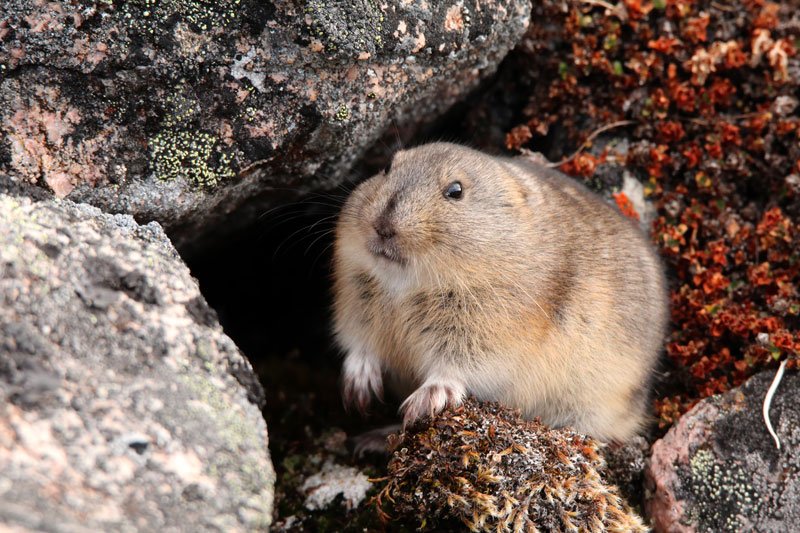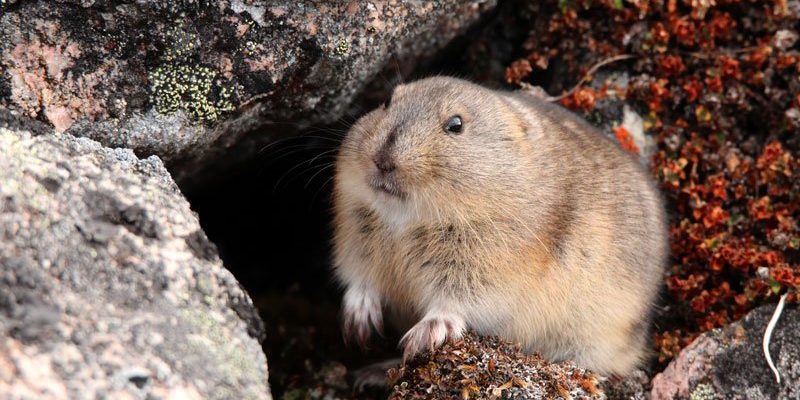
You might have heard of lemmings as these small, adorable creatures known for their quirky behavior. But have you ever stopped to wonder, what exactly are they? Lemmings are small rodents that belong to the subfamily Arvicolinae, which includes voles and muskrats. They are primarily found in the cold, harsh environments of the Arctic and subarctic regions of North America, Europe, and Asia. Their cute, rounded bodies are covered in dense fur, which helps them stay warm in freezing temperatures.
Often misunderstood, lemmings have gained a bit of a reputation in popular culture, often portrayed as impulsive little critters that leap off cliffs. The truth is, they are much more interesting! These creatures have adapted well to their environment and play an essential role in the tundra ecosystem. So, let’s explore what makes lemmings so special!
Physical Characteristics of Lemmings
Lemmings are typically small, measuring about 6 to 10 inches in length, with a short, bushy tail. Their fur is often brown or grey, which provides excellent camouflage against the rocky and snowy terrain they inhabit. One fascinating aspect of their appearance is their large, dark eyes, which help them see well in low-light conditions.
Their compact body structure is not just for show; it helps them conserve heat during harsh winter months. In fact, lemmings can withstand frigid temperatures that would be too extreme for many other animals. They have a thick layer of fat beneath their skin that acts as insulation, ensuring they stay warm and cozy even in the coldest weather.
Here’s a fun fact: despite their small size, lemmings are known for their impressive burrowing skills. They create extensive tunnel systems beneath the snow, which provide shelter from predators and harsh weather. If you’ve ever watched a lemming pop up through the snow, you’ll see just how adept they are at navigating their snowy world!
Habitat and Distribution
Lemmings thrive in cold, arctic regions, primarily in tundra ecosystems. You can find them in places like Alaska, Canada, Greenland, and parts of Siberia. Their habitat consists of sprawling plains, rocky areas, and regions with dense vegetation, which is essential for their survival. In these areas, they feed on a variety of plant materials, including grasses, roots, and even some bark.
Interestingly, lemmings are notorious for their population boom-and-bust cycles, which can lead to mass migrations. During years of plenty, their population can explode, sometimes leading to thousands of lemmings swarming across the tundra. When food becomes scarce, they often venture into new areas, which has contributed to the myth of them “jumping off cliffs” in a desperate attempt to find food.
This migration is not just a random decision; it’s a crucial part of their survival strategy. By exploring new regions, they reduce competition for resources and increase their chances of finding suitable habitats. It’s a remarkable example of nature’s balancing act!
Diet and Feeding Habits
Lemmings are herbivores, primarily munching on a range of plant materials. Their diet includes grasses, sedges, mosses, and leaves. During the winter months, they rely heavily on the parts of plants that are buried beneath the snow. This adaptation allows them to access food sources that other animals might overlook.
One of the most intriguing aspects of their feeding behavior is how they impact their environment. As lemmings graze on vegetation, they help maintain the health of the tundra ecosystem. Their feeding habits promote the growth of new plants, which in turn supports a variety of other animals. This creates a cycle of life that emphasizes their importance in the food chain.
Despite their small size, lemmings have voracious appetites. They can consume a significant amount of food relative to their body weight, which helps sustain their rapid reproduction rates. In fact, during periods of high food availability, female lemmings can give birth to multiple litters in a single breeding season, adding to their numbers quickly!
Reproduction and Lifespan
Lemmings have a fascinating reproductive cycle. They typically breed in the summer months, which aligns with the most plentiful food sources. A female lemming can give birth to a litter ranging from 4 to 8 pups after a gestation period of about 3 weeks. The pups grow rapidly, becoming independent in just a few weeks. This short life cycle and high reproductive rate are essential for their survival in the wild.
However, lemmings don’t have a long lifespan. In the wild, they usually live only about 1 to 2 years, though some may survive longer if conditions are favorable. Their short lifespan is offset by their high reproductive rate, ensuring that even if many face the perils of predators, they can still maintain healthy population sizes.
Interestingly, the lemming’s rapid breeding can lead to some strange behaviors during population booms. With so many lemmings in one area, they can become overly aggressive about territory and food, leading to increased competition. This can also make them more vulnerable to predators like arctic foxes and birds of prey, who see this abundance as an opportunity to feast.
Behavior and Social Structure
Lemmings are generally solitary creatures, though they may come together during mating season or when they are in high-density populations. They are also known for their curious and inquisitive nature, often exploring their surroundings with a sense of adventure. This behavior is vital for their survival, as it helps them locate food and identify potential predators.
During harsh winters, lemmings will huddle together in their burrows for warmth. These small groups provide social stimulation and help maintain body heat. It’s a lovely reminder of how even the tiniest creatures exhibit social behaviors to survive in challenging environments.
One interesting behavior is their tendency to burrow. Lemmings create elaborate tunnel systems, often weaving through the snow and soil. These tunnels not only serve as shelter but also as a way to move around safely while avoiding predators. It’s like having a secret underground network that keeps them safe from harm!
Conservation Status and Threats
Currently, lemmings are not considered endangered and have stable populations in their natural habitats. However, they face challenges from climate change, which threatens their tundra ecosystems. As temperatures rise, the habitats they depend on may alter significantly, impacting their food sources and breeding grounds.
Additionally, lemmings are vulnerable to predation from animals such as arctic foxes, snowy owls, and even larger mammals. While their high reproduction rates help offset this mortality, any drastic changes in their environment could disrupt this balance. Conservation efforts that focus on preserving tundra habitats are crucial to ensuring that lemmings and other Arctic wildlife can thrive.
Habitat loss due to human activity, such as mining and infrastructure development, poses another risk. By protecting these fragile ecosystems, we can help maintain the delicate balance of life that supports lemmings and the many species that coexist with them.
Fun Facts About Lemmings
- Not All Lemmings Jump Off Cliffs: Contrary to popular belief, they don’t mindlessly leap off cliffs. This myth likely originated from their migration patterns.
- Rapid Population Booms: Lemmings experience population explosions every few years, which can lead to incredible migrations.
- Great Adaptations: Lemmings can dig tunnels under the snow that can be quite extensive, providing them access to food and shelter.
- Diverse Species: There are several species of lemmings, including the Arctic lemming and the Norway lemming, each adapted to their specific habitat.
- Cute and Colorful: Lemmings may be small, but they are known for their charming and lively personalities, often captivating those who observe them.
Interesting Facts Table
| Characteristic | Details |
| Size | 6 to 10 inches long |
| Habitat | Arctic and subarctic regions |
| Diet | Herbivores—grasses, roots, and leaves |
| Lifespan | 1 to 2 years in the wild |
| Reproduction | 4 to 8 pups per litter |
| Notable Behavior | Burrowing and migration during population booms |
FAQ
Are all lemmings the same species?
No, there are multiple species of lemmings, such as the Arctic lemming, Norway lemming, and the Dwarf lemming. Each species has unique adaptations to thrive in its specific environment.
Do lemmings really commit mass suicide?
The idea that lemmings commit mass suicide by jumping off cliffs is a myth. They migrate in search of food, and some may accidentally fall off cliffs during their journey, but this behavior is not intentional.
How do lemmings survive the cold?
Lemmings have thick fur and a layer of fat that insulates them from the cold. They also create tunnels under the snow, which help them avoid harsh weather and predators.
What do lemmings eat?
Lemmings primarily eat a diet of grasses, sedges, leaves, and other plant materials. Their herbivorous diet allows them to thrive in the tundra ecosystem.
How fast can lemmings move?
Lemmings are not particularly fast runners, but they can scurry quickly when necessary. They rely more on their burrowing skills to escape predators than on speed.
Why are lemmings important to their ecosystem?
Lemmings play a crucial role in their ecosystem by serving as a food source for predators and helping maintain vegetation health through their feeding habits. Their presence supports a balanced food chain.
How do lemmings communicate with each other?
Lemmings communicate through vocalizations and scent marking. These forms of communication help them establish territory and signal danger to one another.
Can lemmings be kept as pets?
While lemmings may appear cute and cuddly, they are wild animals and not suited for domestication as pets. They have specific habitat needs and behaviors that are challenging to accommodate in a home setting.

